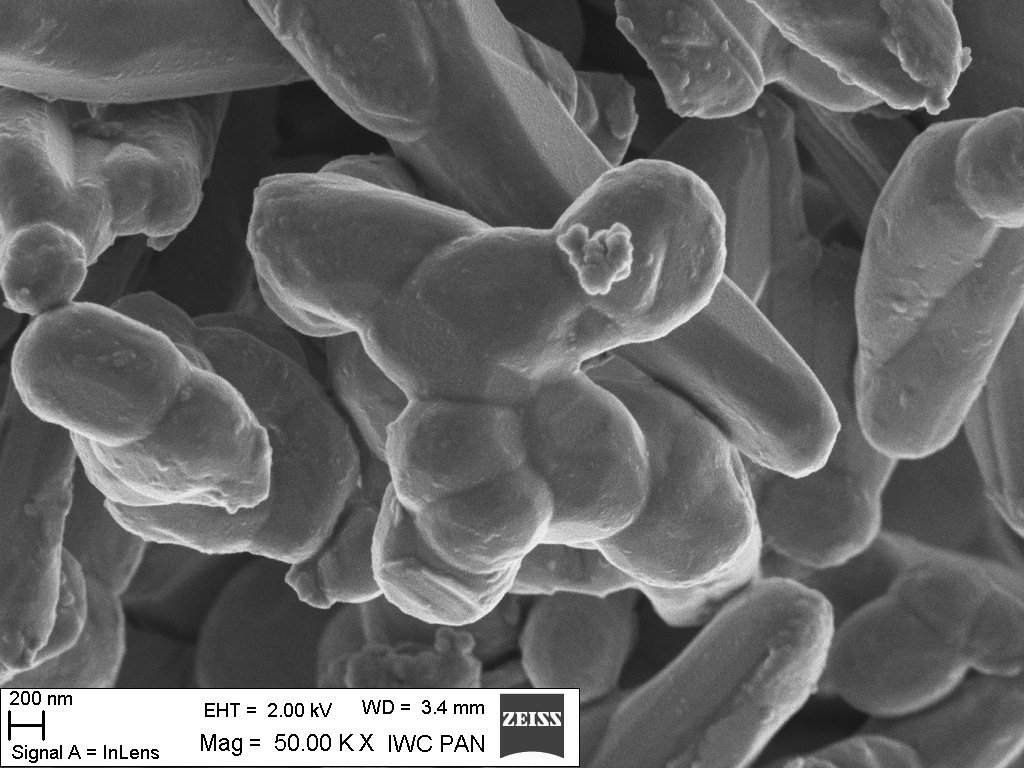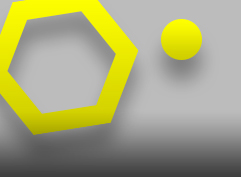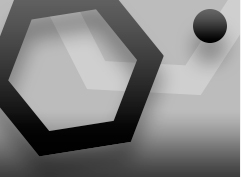Nanotechnology is a discipline concerned with precise manipulation of individual atoms and molecules to create a new objects. It is using of the structures and features of nanoparticles in size from 1 to 100 nm, ie. 10-9 meters (approximately ten-thousandth the thickness of a human hair). This highly advanced and revolutionary technology is studying and using materials in all sectors of human activity. Nanotechnology is actually a group of classical technologies (solid state technology, biotechnology, chemical technology, etc.) which are converted into nano-scale. An integral part of these technologies is the construction of facilities for research and analysis in dimensions approaching the world of atoms (AFM microscopes, Tunnel microscopes).
The first use of the concepts in 'nano-technology' (but predating use of that name) was in "There's Plenty of Room at the Bottom," a talk given by physicist and chemist Richard Feynman at an American Physical Society meeting at Caltech on December , 1959. Feynman described a process by which the ability to manipulate individual atoms and molecules might be developed, using one set of precise tools to build and operate another proportionally smaller set, so on down to the needed scale. Nanotechnology and nanoscience got started in the early 1980s with two major developments; the birth of cluster science and the invention of the scanning tunneling microscope (STM). This development led to the discovery of fullerenes in 1986 and carbon nanotubes a few years later.In another development, the synthesis and properties of semiconductor nanocrystals was studied. This led to a fast increasing number of metal oxide nanoparticles of quantum dots. The atomic force microscope was invented six years after the STM was invented.
Molecular self-assembly is an important aspect of bottom-up approaches to nanotechnology. Using molecular self-assembly the final (desired) structure is programmed in the shape and functional groups of the molecules. Self-assembly is referred to as a 'bottom-up' manufacturing technique in contrast to a 'top-down' technique such as lithography where the desired final structure is carved from a larger block of matter. In the speculative vision of molecular nanotechnology, microchips of the future might be made by molecular self-assembly. An advantage to constructing nanostructure using molecular self-assembly for biological materials is that they will degrade back into individual molecules that can be broken down by the body.
Nanomaterials have the following common features:
- Building units are nanoparticles with defined features (size, shape, atomic structure, crystallinity, interphase interfaces, homogeneous / heterogeneous composition and chemical composition).
- They are arranged in macroscopic multi-cluster materials. Chemically identical particles may be compacted to form grain boundaries. The particles may be decoupled or coupled with coalescence or surface and form: nanowires, nanotubes, nanocomposites, ceramic or other thin films and layers. Examples of Nanotechnology Application.
In the coming years, nanotechnology is predicted increasingly frequent implanting into production processes and growth in public awareness. Some may know that nanotechnology is already used, for example, in the hard disks of computer, in sunscreens, in car tires and others products
We are already working in nanotechnology industry the thirteenth year and can fully confirm this. What was for most people in 2004 laughable and incomprehensible has become a regular part of their lives. Just as in the macroscopic world we have many examples of interesting miniaturization. Would you have thought in 2004 that somebody will deliver champagne on the balcony with the drone? As well as in the microworld have been a number of similar revolutions.
Enforcement of nanotechnology in production leads to creation of entirely new products whose production once seemed impossible.
Examples of actual applications:
Medicine
Directed destruction of tumors, lab-on-chip (diagnostic laboratory on chip), artificial cells, directed medicaments delivery, artificial joints, valves, tissue replacement, effective disinfectant solutions, medical devices for effective wound healing.
Textile industry
The functional clothes, smart fabrics, threads with different properties or medicaments.
Food
Smart and multifunctional packaging to increase durability and food quality, effective nutritional supplements, better use of substances in food.
Electronics
High-capacity recording media, logic circuits at the molecular level, display devices with high-resolution, photographic materials, photovoltaics, fuel cells, high-capacity batteries, sensors and detectors.
Transportation
New, superstrong and ultralight materials in the construction elements, superhard materials, lubricants with low friction, composite materials, cutting tools.
Automotive industry
New types of catalysts for capturing emissions, additives for reducing fuel consumption and emissions and superhard coatings with selfrecovery surfaces, intelligent sensors.
Construction
Insulating materials of new generation, self-cleaning facade coatings, release cladding, photovoltaic facades.
Aerospace
Catalysts and a new, highly efficient fuel resistant surfaces satellites, high-strength materials and ultralight.




 NanoTrade
NanoTrade
 Clean areas
Clean areas
 Energy
Energy
 Functional wear
Functional wear
 Material upgrading
Material upgrading
 Health, veterinary,
Health, veterinary,  Technology
Technology
 Projects VaV
Projects VaV